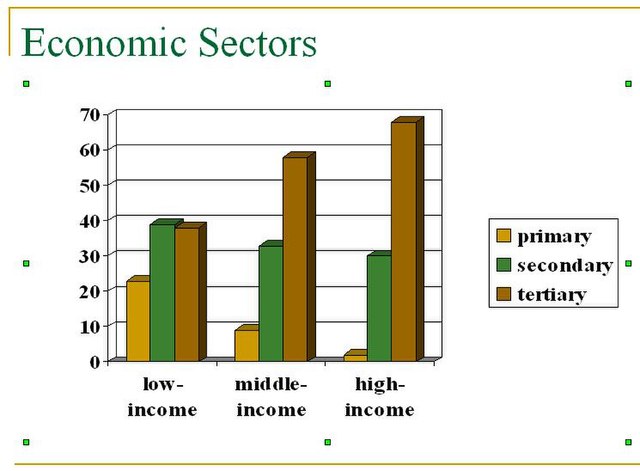The three-sector model in economics divides economies into three sectors of activity: extraction of raw materials (primary), manufacturing (secondary), and service industries which exist to facilitate the transport, distribution and sale of goods produced in the secondary sector (tertiary). The model was developed by Allan Fisher, Colin Clark, and Jean Fourastié in the first half of the 20th century, and is a representation of an industrial economy. It has been criticised as inappropriate as a representation of the economy in the 21st century.
This figure illustrates the percentages of a country's economy made up by different sector. The figure illustrates that countries with higher levels of socio-economic development tend to have less of their economy made up of primary and secondary sectors and more emphasis in tertiary sectors. The less developed countries exhibit the inverse pattern.
An economy is an area of the production, distribution and trade, as well as consumption of goods and services. In general, it is defined as a social domain that emphasize the practices, discourses, and material expressions associated with the production, use, and management of resources. A given economy is a set of processes that involves its culture, values, education, technological evolution, history, social organization, political structure, legal systems, and natural resources as main factors. These factors give context, content, and set the conditions and parameters in which an economy functions. In other words, the economic domain is a social domain of interrelated human practices and transactions that does not stand alone.
New York City, the world's principal fintech and financial center and the epicenter of the world's principal metropolitan economy
Frankfurt Stock Exchange in 2015



